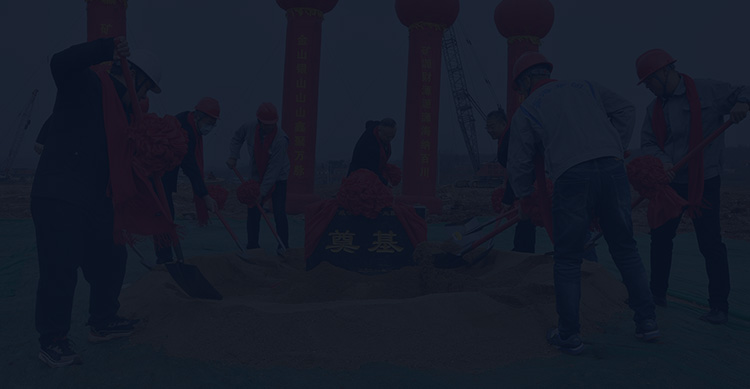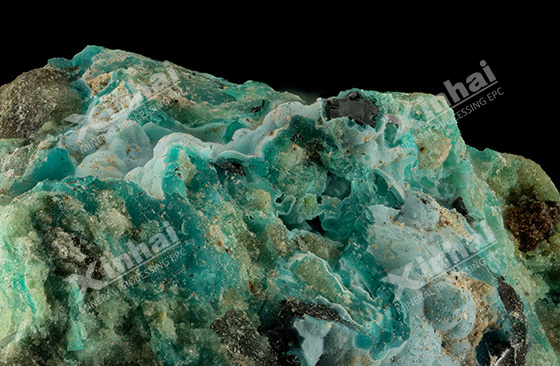
As an important industrial metal, copper can be widely used in electricity, construction, new energy and other fields. Flotation process is a core process commonly used in copper ore dressing. The effect of flotation process will directly affect the utilization rate of copper ore resources and the economic benefits of the dressing plant. In nature, there are many types of copper mines. Common types of copper mines include sulfide ores, oxide ores and associated copper ores. The flotation processes of these ores are different. Because the flotation process will be affected by many factors such as ore properties and reagents, multiple aspects need to be considered when choosing a flotation process. The following article will analyze the copper flotation process for different types of copper ores to help you understand and optimize the copper ore dressing process.
Copper sulfide ore is the main source of copper resources. Common copper sulfide ores include chalcopyrite, bornite and chalcocite. The key points of the of this copper flotation process are as follows:
.jpg)
1. Crushing and grinding process: The crushed ore enters the ball mill for processing, and the ore with a particle size of -200 mesh accounts for 60%-80%. This degree can ensure the completion of the monomer dissociation of copper minerals, and at the same time reduce the influence of copper minerals and gangue symbiotic minerals such as pyrite on flotation selectivity.
2. Flotation reagents: Commonly used collectors for copper sulfide ore include butyl xanthate, amyl xanthate and other thio compounds, which are used to enhance the hydrophobicity of the copper mineral surface and improve the flotation efficiency. Copper sulfate is used to activate difficult-to-float copper minerals and improve their flotation performance. The inhibitor used for copper sulfide flotation is lime, which is used to inhibit pyrite and prevent gangue minerals from entering the copper concentrate.
3. Flotation process design: The sulfide copper flotation process often adopts a three-stage process of "roughing-fine selection-scavenging selection". Sometimes, it is also necessary to design a re-grinding process to improve the copper recovery rate and concentrate quality.
A porphyry copper mine adopts the "one roughing, three fines and two scavenging" process and optimizes the reagent system to increase the copper recovery rate to 92%. In addition, some mines have introduced column flotation machines and micro-bubble flotation technology to improve the recovery efficiency of copper minerals and reduce reagent consumption.
Oxidized copper ores include malachite and cuprite. These copper minerals have strong hydrophilicity on the surface and poor floatability, and require special treatment to enhance the flotation recovery rate. The oxidized copper flotation process includes sulfide-xanthate flotation, fatty acid direct flotation, and chelating agent enhanced flotation.

1. Sulfide-xanthate method: Sodium sulfide is added to the pulp to sulfide the surface of the oxidized copper mineral to improve its floatability. Xanthate is then used to collect copper concentrate to improve the mineral recovery rate.
2. Direct flotation of fatty acids: Fatty acid collectors such as oleic acid and tall oil can improve the flotation efficiency under weak alkaline conditions (pH 9~10). However, flotation is easily affected by ore mud, and desludging pretreatment is required.
3. Chelating agent enhanced flotation: Chelating agents such as hydroxamic acid and thiocarbamate can form stable complexes with copper ions, improve selectivity, and increase the flotation efficiency of copper oxide by 2~3 times.
.png)
Oxidized copper ore is easy to become slime, which not only reduces the flotation efficiency, but also increases the reagent consumption. Therefore, modern processes often combine desliming, flocculation pretreatment and ultrasonic enhanced flotation to optimize the flotation effect.
The process of associated copper ore is highly complex and needs to be optimized in combination with mineral characteristics.
.jpg)
1. Flotation of copper-molybdenum ore: copper is floated first, and then molybdenum. Lime is added to the slurry to inhibit pyrite, and xanthate is added to capture copper minerals. Then, collectors such as kerosene or diesel and sodium sulfide inhibitors are added to increase the recovery rate of molybdenum.
2. Flotation of copper-gold ore: butyl xanthate is used to capture copper and gold at the same time, and mixed concentrate is cyanided and leached to improve economic benefits. Flotation tailings are re-selected or cyanided to recover gold to avoid gold loss.
3. Flotation of copper-lead-zinc ore: lime and cyanide are added to inhibit lead and zinc, and copper minerals are floated first. Then zinc sulfate and sodium sulfite are added to inhibit zinc minerals, and lead minerals are selectively floated to achieve efficient separation of lead and zinc ores.
.jpg)
The above is a brief introduction to the different types of copper flotation process. In actual production, by scientifically and rationally selecting and improving the flotation process, the recovery rate of copper ore resources and the economic benefits of the ore dressing plant can be maximized. Xinhai Mining can provide customers with one-stop service EPC+M+O for copper ore dressing, which helps the efficient operation and production of the ore dressing plant. If you need it, please feel free to consult.
To find out more about our products and solutions, please fill out the form below and one of our experts will get back to you shortly.